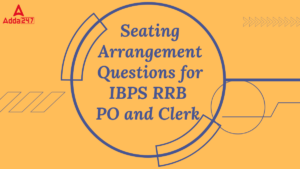Team Adda247 and Bankers Adda have introduced a Special Banking Awareness series for SBI and IBPS Interviews 2021. In this series, we will be introducing the candidates with some banking awareness topics Daily that will improve their general awareness and will also ensure that the candidates do not lack in any banking term when it comes to the interview round. Today the topic of our Banking Awareness Series is Currency circulation and management in India.
Currency circulation and management in India
The Reserve Bank of India has the authority to issue, manage and distribute currency notes and coins in India. The Reserve Bank of India does this task according to the Reserve Bank of India Act, 1934 guidelines and regulations.
The government of India decides the denominations on the advice and recommendations of RBI.
The RBI helps the government to design the bank notes including its security features.
RBI predicts the number of notes which are likely to be needed for circulation. Indian statistical studies do this activity for RBI and Government which helps RBI to predict the quantity of notes.
How RBI distributes notes and coins:
Currency flow: Printing presses > RBI Offices > Currency chests > Bank branches > Public
- RBI distributes currency notes and coins through bank branches which are called currency chests. Currency chests and coin storage are managed by commercial and regional rural banks. SBI has the highest number of currency chests in India.
- Banks are responsible for movement from Chests to a bank branch. From chests, currencies are distributed to branches as per demand and demand is based on business volume.
Currency in Circulation (CiC): At present, India is issuing currency notes in the denomination of Rs.5, Rs.10, Rs.20, Rs.50, Rs.100, Rs.200, Rs.500 and Rs.2000. These notes are known as banknotes and they are issued by the Reserve Bank of India.
Printing presses:
For Indian Rupee notes The Security Printing and Minting Corporation of India (SPMCIL) in Nashik, Maharashtra and in Dewas, Madhya Pradesh.
The other Owned by RBI: Bhartiya Reserve Bank Note Mudran (BRBNML) at Mysuru, Karnataka and Salboni, West Bengal.
For Coins: The government of India has four mints for minting coins are at Mumbai, Hyderabad, Kolkata and Noida.
Bank Notes under the Mahatma Gandhi series which were launched in 2016, highlighting the cultural heritage of India and India’s scientific achievements. During the 2016, banknotes of Rs.100 and Rs.20 denominations of the same series were also issued. During 2018-19, important development including introduction of Rs.20 and Rs.100 denominations and up-gradation of currency verification and processing systems have been done. Even concerted efforts of indigenization of manufacturing color shifting ink were also made.
According to RBI data, the total currency in circulation with the public is more than 2787900 crore in March 2021.


 GA Capsule for SBI Clerk Mains 2025, Dow...
GA Capsule for SBI Clerk Mains 2025, Dow...
 The Hindu Review October 2022: Download ...
The Hindu Review October 2022: Download ...
 Seating Arrangement Questions for IBPS R...
Seating Arrangement Questions for IBPS R...





